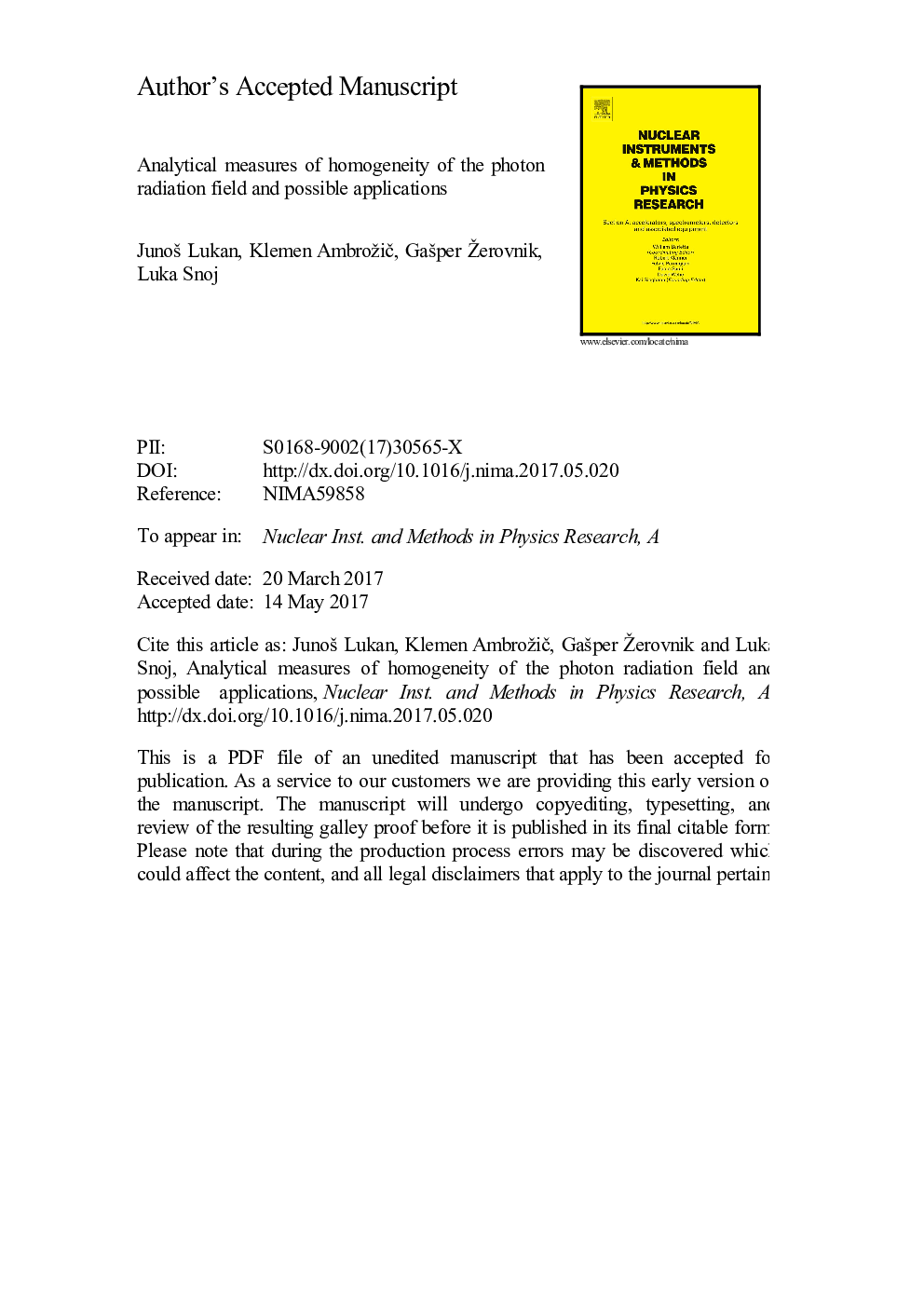| Article ID | Journal | Published Year | Pages | File Type |
|---|---|---|---|---|
| 5493081 | Nuclear Instruments and Methods in Physics Research Section A: Accelerators, Spectrometers, Detectors and Associated Equipment | 2017 | 19 Pages |
Abstract
For many practical applications, homogeneity of a field, whether neutron or electromagnetic, is of significance. Definitions of homogeneity or its calculation are diverse in the existing literature, however. This paper is an attempt to explore the concept of homogeneity and the ways it can be measured or calculated. The list of the measures that were considered includes: the ratio between the maximum and the minimum value, the ratio between the maximum difference and the mean value, the variance of the field and its generalization, and the mean and the variance of the field's gradient. These were applied to a realistic gamma-ray irradiation scenario, both by deriving a semi-analytical approximation and in a Monte Carlo numerical simulation. The irradiation arrangement included a hollow cylindrical irradiation channel and different numbers of spent fuel elements taken from a TRIGA reactor. By manipulating the geometry of this setup, fields of varying degrees of homogeneity were simulated and the homogeneity measures were calculated. By applying principal component analysis the maximum value to the weighted mean ratio was put forth as the most desirable measure. Finally, the application of this measure was demonstrated by choosing one of the irradiation configurations previously considered that produced a homogeneous gamma-ray field.
Related Topics
Physical Sciences and Engineering
Physics and Astronomy
Instrumentation
Authors
JunoÅ¡ Lukan, Klemen AmbrožiÄ, GaÅ¡per Žerovnik, Luka Snoj,
